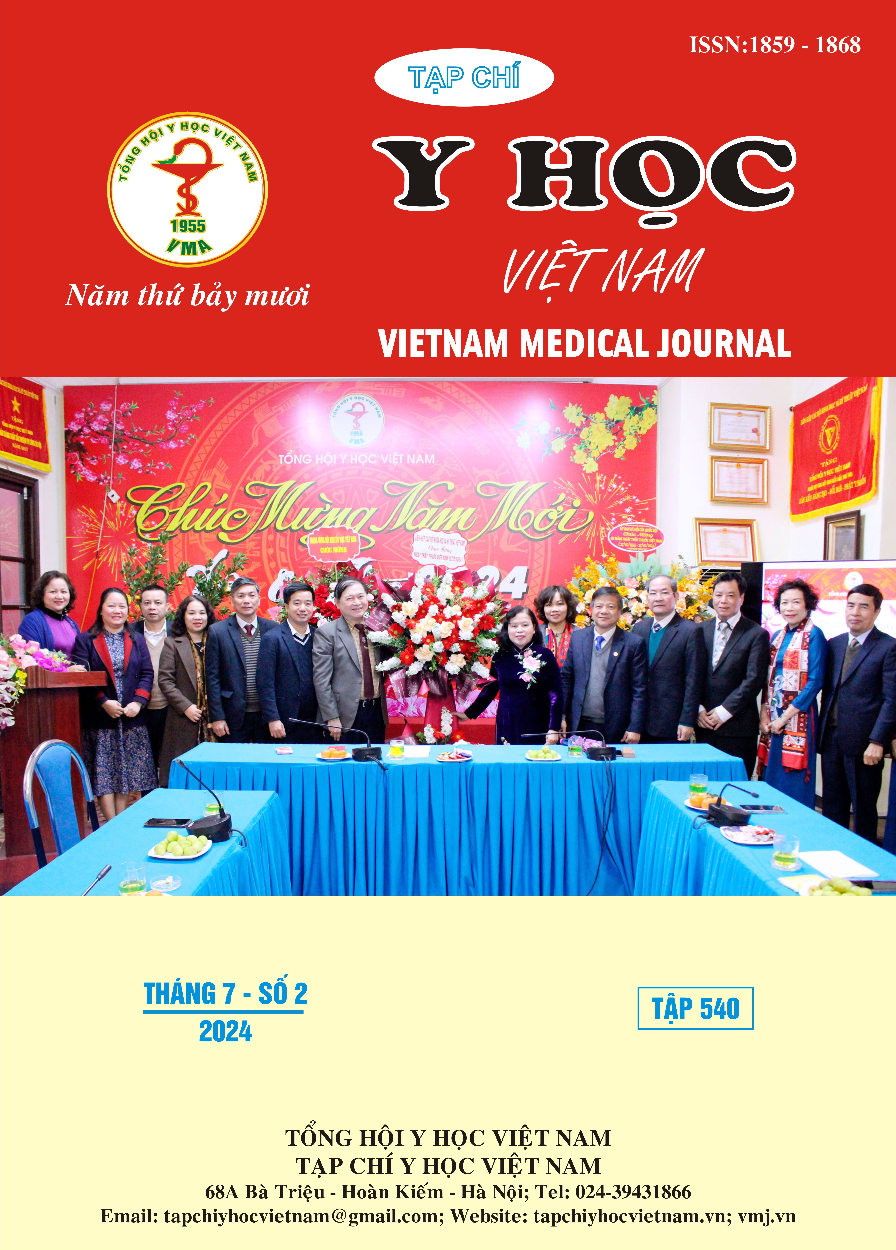INVESTIGATION OF VANCOMYCIN USAGE IN ELDERLY PATIENTS AT FRIENDSHIP HOSPITAL
Main Article Content
Abstract
Objective: To describe the usage characteristics of vancomycin in elderly patients at Friendship Hospital after implementing a preauthorization process with the contribution of a clinical pharmacist. Subjects and methods: Retrospective descriptive study based on data obtained from medical records of elderly inpatients (≥ 60 years old) at Friendship Hospital during the period from 01/6/2022 to 31/5/2023 treated with vancomycin intravenously for at least 24 hours. Results: The median age of the patients was 82 years old, men accounted for 75.8%. Patients discharged from the hospital with recovery/ improvement account for 56.7%. Vancomycin is prescribed empirically in 70% of patients. The rate of patients undergoing microbiological culture was 93.3%, of the 104 specimens with positive results, Staphylococcus aureus accounted for 26.9%, Methicillin-resistant Staphylococcus aureus (MRSA) accounted for 23.1%. Loading dose regimen was applied in 97.5%. The common maintenance doses were 1g/24h (54.5%) and 1g/12h (30.9%). The rate of patients experiencing nephrotoxicity was 7.5%. Conclusion: The activities of clinical pharmacists have had a positive impact on the usage of vancomycin as the rate of patients prescribed an appropriate loading dose and the maintenance dose was determined to be appropriate for kidney function at the beginning of treatment is high. However, the study noted that a certain proportion of patients did not receive appropriate dose adjustment when kidney function changed. Therefore, Friendship Hospital needs to promote therapeutic drug monitoring of vancomycin, especially as the patient population has a very high age.
Article Details
Keywords
Vancomycin, elderly, usage characteristics.
References
2. Mạc Thị Mai (2021), "Thực trạng sử dụng vancomycin tại Bệnh viện Trung ương Quân đội 108", Tạp chí Y Dược lâm sàng 108, pp. 49-58.
3. Huỳnh Thị Bích Phượng (2023), Phân tích dược động học quần thể của vancomycin trên bệnh nhân cao tuổi dựa theo dữ liệu giám sát nồng độ thuốc trong máu tại Bệnh viện Thống Nhất, Luận văn thạc sĩ Dược học, Trường Đại học Dược Hà Nội.
4. Cuervo G., Gasch O., et al. (2016), "Clinical characteristics, treatment and outcomes of MRSA bacteraemia in the elderly", J Infect, 72(3), pp. 309-16.
5. Khwaja A. (2012), "KDIGO clinical practice guidelines for acute kidney injury", Nephron Clin Pract, 120(4), pp. c179-84.
6. Mao P., Peng P., et al. (2019), "Risk Factors And Clinical Outcomes Of Hospital-Acquired MRSA Infections In Chongqing, China", Infect Drug Resist, 12, pp. 3709-3717.
7. Pea F. (2018), "Pharmacokinetics and drug metabolism of antibiotics in the elderly", Expert Opin Drug Metab Toxicol, 14(10), pp. 1087-1100.
8. Rybak M. J., Le J., et al. (2020), "Therapeutic monitoring of vancomycin for serious methicillin-resistant Staphylococcus aureus infections: A revised consensus guideline and review by the American Society of Health-System Pharmacists, the Infectious Diseases Society of America, the Pediatric Infectious Diseases Society, and the Society of Infectious Diseases Pharmacists", Am J Health Syst Pharm, 77(11), pp. 835-864.
9. Tacconelli E., Pop-Vicas A. E., et al. (2006), "Increased mortality among elderly patients with meticillin-resistant Staphylococcus aureus bacteraemia", J Hosp Infect, 64(3), pp. 251-6.
10. van Hal S. J., Lodise T. P., et al. (2012), "The clinical significance of vancomycin minimum inhibitory concentration in Staphylococcus aureus infections: a systematic review and meta-analysis", Clin Infect Dis, 54(6), pp. 755-71.


